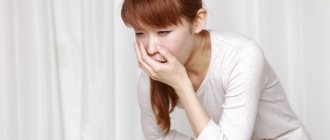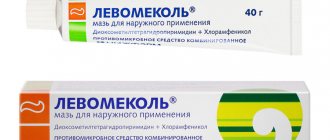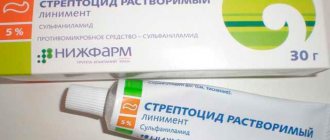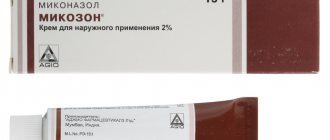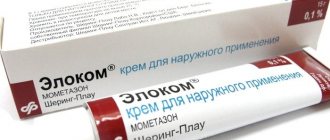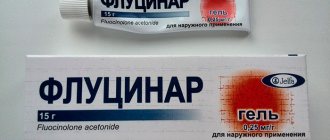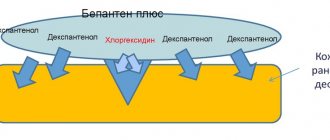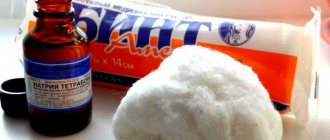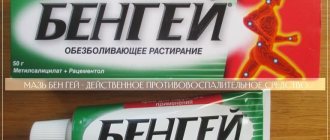Does breastfeeding hurt? Yes, unfortunately this happens, and no, this is not the norm. Most often, pain during breastfeeding is experienced by young mothers while they are learning to put their baby to the breast. The skin of the nipples is still very tender, the sucking reflex of a newborn is powerful - as a result, many mothers experience severe discomfort. Fortunately, this can be avoided.
Today there are many products for quick healing of nipple skin that really help. Let's talk about the best of them.
How cracks appear
The skin of the nipple is delicate and thin, but during the feeding process it is subjected to serious tests - the baby’s gums are very hard and he makes serious efforts while sucking. All this cannot but affect the nipples - the skin is under stress and cracks appear. They cause sharp, sometimes unbearable pain during feeding; blood oozes from the wounds, which can enter the baby’s mouth along with milk.
It is necessary for a so-called callus to appear on the nipple, similar to the one that appears on the fingers of guitarists - at first it is very painful for them to touch the strings, but pretty soon the pads of the fingers become rough and do not notice the tension. The same goes for the tender breast area - the skin there becomes a little rougher, and feeding becomes less painful.
For some people it takes a week for this callus to form, for others much longer. If at the very beginning of the process you do not heal the wounds in any way, do not use ointment for cracked nipples, inflammation may form during feeding, during which white blisters and redness appear on the injured area. If you do not neglect the problem, it will be resolved quickly, and treatment will minimize the pain of the process.
Preventive measures
Prevention of cracked nipples is carried out long before the baby is born, already during pregnancy. Since the mammary glands begin to prepare for feeding and increase in volume, already at this time the expectant mother should think about comfortable underwear and proper care. At first, a massage after taking a shower will not be amiss - you can lightly massage the area around the nipple with a towel. Hardening procedures will also tone the muscles and help avoid various damage. A nursing mother will need special hygienic breast pads. As soon as the pads become wet, they must be replaced with dry ones to remove excess moisture and prevent further rubbing of the skin against the underwear. The most effective method of prevention is considered to be the correct attachment of the child. Correct capture of the nipple and areola will save the mother from many problems with the mammary glands.
Even if a young mother faces such difficulties, she should not give up breastfeeding. These are temporary difficulties that can happen to anyone due to inexperience. Abrasions or wounds on the nipples are quite easy to treat, the main thing is not to start the process and prevent the spread of infection in order to avoid infecting the baby.
Causes of cracks
- Incorrect grasp of the nipple by the baby - the mouth should grasp not only the nipple itself, but also the area around the nipple, then the baby will not pull the skin towards itself, thereby injuring it.
- Incorrect weaning of the breast - if you take it away from a sucking baby, he will instinctively squeeze the gums even more and pull on the nipple, injuring the skin. Be sure to wait until your baby releases the breast or stops sucking.
- Excessive hygiene is a relic of Soviet medicine, which advised young mothers to wash their breasts with water and certainly soap before and after each feeding. Such frequent exposure to an aggressive environment dries out delicate skin, which becomes even easier to injure.
- Incorrect treatment of nipples - follows from the previous point: in many maternity hospitals, doctors of the old school still recommend treating cracks with brilliant green. Meanwhile, the alcohol solution dries the skin even more than water and soap.
- The use of absorbent breast pads - such products are certainly a lifesaver for new mothers who experience periodic milk flows. However, if you do not change the gaskets too often, the warm, moist environment in them will be an ideal place for inflammation to appear in existing cracks. Use such devices when going out or only during the day, changing them regularly.
Use during pregnancy and breastfeeding
The use of D-panthenol ointment during pregnancy is allowed only under constant medical supervision. It is recommended to apply the product 2-4 times a day to the nipple area of nursing mothers; in the most severe cases, the ointment can be used as therapeutic compresses.
For women during lactation, it is recommended to apply the product after each feeding of the baby. D-panthenol ointment and cream is applied exclusively externally to the area of damaged nipples.
Should I wash it off before feeding? Dermatologists advise nursing mothers to thoroughly wash the mammary glands before feeding with warm boiled water, removing any remaining cream with a soft towel. After the baby eats, it is recommended to reapply the medicine.
Why is it important to treat cracked nipples?
Cracks are actually open wounds from which ichor and blood ooze during feeding. Naturally, such wounds are the gateway to any infection. If you start the problem, then very soon mastitis will join the cracks - inflammation of the mammary gland. This disease often requires surgery and can cause lifelong complications.
Panthenol: indications for use
Panthenol is a universal drug that is used to restore skin for injuries, burns, inflammatory diseases, varicose veins, etc. It helps to quickly heal the skin for all kinds of abrasions and cuts, dermatitis (Dermatitis), cracks, bedsores and trophic ulcers. For cosmetic purposes, the product can be used to protect against dry skin as a result of exposure to wind, frost, etc.
Indications for use panthenol
The ointment can be used on open wounds. It is also used to speed up healing during skin grafting. In addition, panthenol is widely used in cosmetics. Dry skin is treated with products containing it.
What not to put on cracks
It is strictly forbidden to apply or smear the following drugs on injured nipples:
- Antibiotic nipple ointment - this is only prescribed by a doctor if there is a serious infection and is generally incompatible with breastfeeding.
- Iodine or brilliant green are alcohol-containing solutions, and alcohol dries out the epidermis - not the best solution for delicate, injured skin.
- Lotions made from alcohol or vodka - for the same reason.
Other means
In addition to the drugs Levomekol, Medel, Purelan, Traumeel and others, a woman can use syntomycin or tetracycline cream. In addition to pharmaceutical drugs, you can lubricate nipples with folk remedies:
- butter
- treating the damaged area with breast milk
- applying cabbage leaf
- apple lotions
- use sea buckthorn juice or oil, because sea buckthorn heals well
- gruel from raw beets or ointment from black poplar buds
You cannot use products such as brilliant green and hydrogen peroxide, but you can use olive, coconut or Vaseline cream. Castor oil preparation is also not worth buying; castor oil can disrupt the functioning of the child’s intestines.
How and what to apply to injured nipples
Cracks, if they are shallow and are not accompanied by purulent discharge, ulcers, blisters, can be treated on their own, although it is always better to show the breasts to a doctor or lactation consultant. They will help correct the grip, which will prevent cracks from appearing again.
Topical therapy works best to treat these injuries, and there are many different ointments, creams, or gels available at the pharmacy. It’s easy to get confused in such a variety, especially if you don’t know which nipple ointment is best. First of all, you need to understand the active substance in these drugs.
Panthenol in cosmetology
The remarkable properties of provitamin B5 have been adopted by cosmetologists.
- Panthenol is the primary remedy for recovery after traumatic procedures: photoepilation, removal of skin defects, peelings, tattooing. Under the influence of the drug, redness disappears literally before your eyes, swelling is removed, damaged skin is calmed.
- Panthenol face cream as a product for rejuvenation, smoothing wrinkles, improving skin condition, especially dry skin, can replace expensive branded products for many women (some of which contain the same panthenol).
- Masks, balms, shampoos with panthenol improve the growth and condition of hair, combat dry hair and scalp.
Panthenol spray 5%, aerosol, 58 g, LIBREDERM
240 ₽
Dietary supplement NOT A MEDICINE
IN THE CATALOG - ALL COSMETICS WITH PANTHENOL
Ointment based on dexpanthenol
These are the most common and popular drugs. They are based on dexpanthenol, a substance derived from pantothenic acid, which is essentially a B vitamin. The most popular representatives are “Panthenol” and “Bepanten” (cream or ointment).
The well-known “Panthenol”, which is available in the form of an ointment or cream of 25 and 50 grams, is excellent for nipples. It is approved during pregnancy and safe during breastfeeding. It is convenient that the drug does not need to be washed off the nipples before feeding, since there are practically no allergic reactions to it in children. Panthenol is also available in spray form. The cost of the drug is 200-350 rubles. depending on shape and volume. Also note that there is a product of domestic and German production.
Bepanten ointment for nipples is a very popular product specifically for the treatment of cracks, as well as diaper rash in a child. It is produced by the German company. The product also goes on sale in the form of a cream with a volume of 30 and 100 grams. There is also an ointment marked “plus”, in which chlorhexidine is added to dexpanthenol for disinfection. The drug is applied to the nipples after each feeding. The price for “Bepanten” starts from 380 rubles for a small volume and up to 800 rubles. per tube of 100 grams.
You can also ask the pharmacy for Russian-made Dexpanthenol ointment - this is the most budget option, only 130 rubles. for a 25-gram tube, and the active ingredient is the same as its analogues.
Mechanism of action
Once on the skin, Panthenol is modified into pantothenic acid. It is the basis of an important skin coenzyme responsible for the healing and restoration of the skin, normalization of metabolism in tissues and the process of their regeneration.
Panthenol is instantly absorbed by the skin, i.e. absorbed almost completely and binds to plasma proteins. But it does not break down into elements and is excreted unchanged from the body. Therefore, the drug is safe and approved for use by pregnant women and nursing mothers .
Nipple ointment with zinc oxide
Zinc oxide has excellent wound-healing astringent properties; in addition, it dries the wound and resists infection. Based on zinc oxide, both specialized preparations for breastfeeding women and general-spectrum products are produced. An important feature is the need to wash off the ointment before feeding.
The most popular product is Sudocrem; it can be found in American and Irish production. They have an identical composition and are available in jars of 60 and 125 grams. By the way, Sudocrem, like products with panthenol, is also suitable for the treatment of diaper dermatitis. The price of the cream is 350-500 rubles.
You can also try Desitin nipple ointment from Johnson & Johnson. A 50-gram pack will cost 260 rubles. A characteristic feature of “Desitin” is the content of cod liver oil, which gives it a specific smell.
If you want to save money, then take zinc ointment or paste; they are usually made in Russia and cost around 100 rubles.
"Bepanten"
This is a favorite of Russian mothers. In some antenatal clinics, Bepanten is on the list of things to fill the “maternity hospital bag.” The fact is that it is declared as a salvation for a nursing mother and as a remedy for diaper rash for a child. Moreover, it is available in almost every pharmacy.
"Bepanten" has a more complex composition than its predecessors, however, it is also safe and effective for mother and child - a large number of studies and reviews can confirm this.
Please note: we are talking about the product “Bepanten Ointment”, the packaging of which indicates that it is suitable for treating the skin of the mother’s breast and the baby’s diaper rash. Do not confuse it with the cream of the same name.
The ointment contains dexpanthenol, which is necessary for skin regeneration. Provitamin B5 maintains an optimal level of skin moisture, helps its natural restoration and relieves irritation. Lanolin forms a protective barrier so that any liquid, be it milk in the case of a mother's breast, or urine and feces in the case of a baby's skin, does not cause irritation. At the same time, the skin continues to breathe, that is, the “greenhouse effect” is not created.
The ointment does not contain dyes, parabens and other potentially dangerous impurities that should not come into contact with infants.
Lanolin for the treatment of cracks
Lanolin is a natural animal fat, also called wool wax, and is obtained by boiling down sheep's wool. Ointment for cracked nipples with lanolin allows you to create a protective film on the skin, under which the wounds heal faster and dry skin becomes more hydrated. However, such creams are more suitable for prevention.
The most popular nipple cream with lanolin is “Purelan” from the Swiss company Medela. It is produced in tubes of 37 grams, the cost is about 500 rubles. "Purelan" consists of 100% lanolin, and this allows you not to wash it off before feeding. Apply the cream in a thin layer without rubbing it into the skin.
Other manufacturers of children's cosmetics and products for mothers have similar creams - Avent, Baby line, Sanosan, Pigeon.
How the drug works
- Enriches the epidermis with provitamin B5, as a result, damage heals faster and the protective layer of the skin is completely restored.
- Normalizes metabolic processes in the dermis, due to this its level of moisture increases.
- Has a moderate anti-inflammatory effect, removes slight redness, irritation, swelling, itching and burning in areas with small scratches, wounds and cracks.
- Forms a thin barrier film on the nipples, protecting the breasts from friction and mechanical influences.
Ointment for nipples when breastfeeding with retinol
Retinol is vitamin A, a dermatoprotector that effectively restores damaged epidermis. Treatment should be done twice a day, making sure to wash off the drug before feeding. Look for products with retinol in the pharmacy - for example, Russian-made Videstim ointment for cracked nipples (100-200 rubles depending on the volume) or Ralevit, enhanced with vitamins E and D2 (350 rubles). However, it is better to use these ointments as prescribed by a doctor and not to combine them with vitamin A, so as not to get an overdose.
Maternea Nipple Cream
Of all the creams presented, this cream is the most complex in composition, but also very effective. It contains a whole combination of active ingredients that reduce the pain of damaged and inflamed skin, and also promote its restoration. It is also recommended to be used from the last months of pregnancy to prepare the nipples for feeding.
Maternea contains purified lanolin, which forms a lipid layer on the skin, increases its elasticity and restores natural protective functions. Cocoa butter contains fatty acids, which only help lanolin in restoring and protecting the skin. Coconut oil has antibacterial and antifungal properties and also makes the skin soft and tender.
Shea butter contains fatty acids and vitamins A, E and F, it restores, moisturizes and protects damaged skin from external influences. D-panthenol and bisabolol soothe and heal. For more convenient application, it is recommended to warm the cream between your fingers.
Natural oils and plant extracts
Natural ingredients with excellent moisturizing and wound-healing properties are sold both in pure form and in combined form, in the form of creams and ointments. For example, cream from Mama Comfort with aloe vera, buckwheat, wheat germ and peach oils.
Ointment for healing nipples “Vulnuzan” from the Bulgarian concern “Sopharma” is made from the extract of mother plants of the Pomorie salt lakes and perfectly heals even deep cracks. The ointment also has antimicrobial and anti-inflammatory effects.
Natural oils - olive, sea buckthorn, cedar - also have excellent properties. They are completely harmless and do not need to be washed off before feeding.
Lanolin Mommy care
The manufacturer of this lanolin cream recommends starting to use it before birth to prepare your breast skin for the upcoming tests.
The cream contains lanolin, which softens and moisturizes the skin. It relieves pain and heals cracks.
In addition, the cream can be used as a wind and cold protectant for exposed areas of the baby's skin during walks, and also as a diaper rash cream under a diaper.
It is recommended to warm the cream well in your hands before applying it to damaged skin, as it is very thick in consistency. There is no need to wash off the cream from the breast before feeding the baby.
Folk recipes
Cracked nipples have plagued nursing women at all times, even before the advent of so many drugs. Our mothers and grandmothers successfully coped with damage using folk methods. First of all, their own milk helped them in this. It has good antiseptic properties and helps heal wounds, so after feeding it is recommended to leave a little of your milk on the nipples and let it dry in the open air.
Cabbage, rich in riboflavin, which accelerates tissue regeneration, helps fight cracks, mastitis, and lactostasis. Beat a cold cabbage leaf to obtain juice and apply it to the sore breast, which will relieve pain and help in healing the skin.
You can also treat nipples with infusion of birch leaves - it helps heal wounds.
When to use Panthenol for nipples
- When the baby does not grasp the breast correctly, when he injures the breast and visible damage appears on it (wounds, cracks, bruises).
- During pregnancy, with hormonal imbalances in a woman’s body, with excessive dryness and irritability of the skin on the chest.
- After the feeding period to speed up the healing process of minor damage to the nipples.
Prevention of cracks
Using any of the listed remedies (or several at once), you can quickly heal the cracks, but if you do not take preventive measures, they will appear again. Therefore, in the very first days, it is necessary to establish the baby’s correct latch on the nipple, and in the subsequent weeks and months of breastfeeding, it is important to maintain hygiene, without overdoing it, but also without neglecting it. It is also important not to injure the nipple by hand expressing or using a breast pump - you need to express milk carefully. We also must not forget about moisturizing the delicate skin of the nipples and protecting them, then breastfeeding will last as long as mother and baby want.
Medela Purelan
Another excellent product based on lanolin, which is used when breastfeeding is painful, the skin of the nipples is irritated, cracks or inflammation appear. This is a sign that the lipid layer of the skin is damaged and needs to be urgently restored.
Purelan can be used for prevention in the first weeks of breastfeeding and even before birth if the nipples become especially sensitive during pregnancy. According to the manufacturer, this is not the entire scope of application of the ointment: it is suitable for healing any chapped and irritated skin: for example, in the cold season, Purelan can successfully treat chapped skin of the lips.
The ointment does not contain any harmful additives, fragrances, dyes, parabens, and it also does not need to be washed off before feeding. The cream is hypoallergenic.
How to choose the most effective remedy for quick healing
It is better to choose the method and method of treating cracks together with your doctor. To choose the right drug, you don’t need to look at photos of results and read every review; you should see a specialist and he will tell you which method of solving it will be more effective. Your doctor may prescribe an effective leave-in cream, with or without antibiotics, antiseptics, depending on the specific case. In order for the product to help, it must be selected correctly and used according to the instructions, only then will it have an effect and allow you to consolidate the result for a long time, relieving the woman of discomfort.
